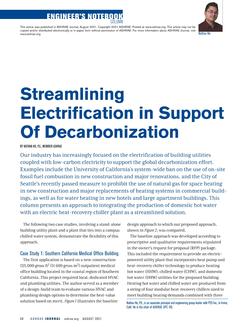This paper uses a coupled thermal comfort and computational fluid dynamics (CFD) simulation system to predict thermal comfort in a cross-ventilated classroom. Simulations using mechanical ventilation and natural ventilation were conducted. In the latter, the effect of asymmetric radiation caused by a chilled ceiling was investigated. The work builds on previous work by the authors by applying a transient approach to the solution procedure. The results demonstrate the possible benefits of using such a coupled system by predicting different body surface temperatures and therefore different air flow velocities around the human body. It was found that the transient solution approach gave improved convergence of the coupled system compared with a traditional, steady-state approach.
Citation: ASHRAE Conference Papers, Denver, CO
Product Details
- Published:
- 2013
- Number of Pages:
- 8
- File Size:
- 1 file , 770 KB
- Product Code(s):
- D-DE-13-C055


